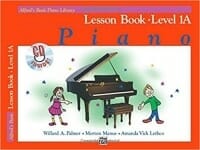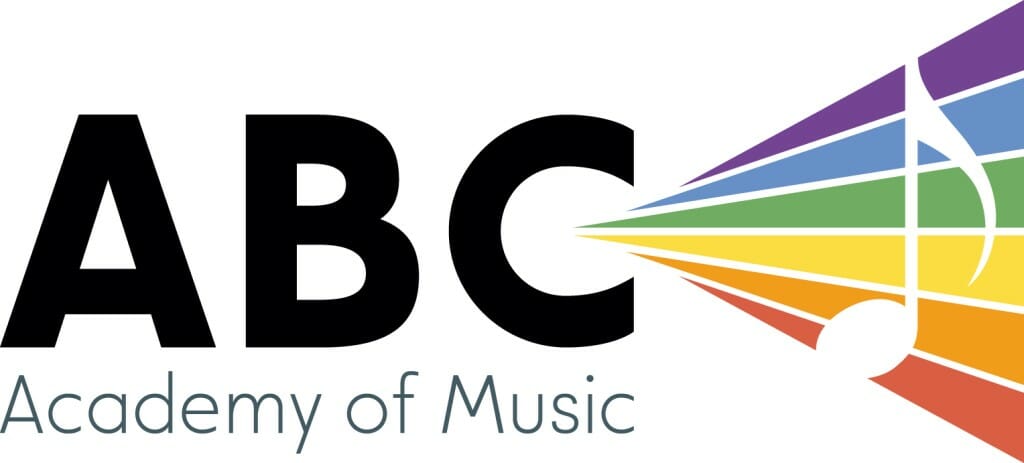B.Mus (Humber) in-progress
Adina is a singer-songwriter based in Toronto completing her Bachelor of Music degree at Humber College in vocal performance. Trained classically in piano since the age of 5, she has branched out into pop and jazz as well.
Vocally she is well-versed in many genres including jazz (she loves to scat!), musical theatre, pop, singer-songwriter, country, R&B, and acappella. She has 7 years of choir experience in both chamber and jazz styles. Adina has been writing and singing original songs since the age of 12, and has two singles as well as an EP out on all platforms under the artist name Adina V.
She has performed all across southern Ontario singing with the Toronto All-Star Big Band, as well as at various venues in the GTA with her own jazz duos and trios. As a member of the Cawthra Park Chamber Choir she performed at Roy Thompson Hall with the TSO for two years in a row. At Humber College she is part of the Vocal Jazz Ensemble led by Lisa Martinelli; this group performs advanced repertoire at events like the Ontario Vocal Jazz Festival.
Adina has been teaching music for the past 7 years and loves helping students meet their personal goals while fostering a love of music that lasts forever!
Get to know Adina…Beyond the Bio!
Hobbies: reading, puzzles, video games, painting
Musical Influences: Ella Fitzgerald, Nancy Wilson, Doris Day, Joni Mitchell, Taylor Swift, John Mayer
Favourite Food: Pad Thai
Least favourite food: eggplant
Favourite music: Indie rock and folk
Favourite song: All I Need by Jacob Collier ft. Mahalia & Ty Dolla $ign
Favourite movie: Matilda
Favourite movie music: The Pirates of the Caribbean theme
Favourite Musical: Dear Evan Hansen or The Last Five Years
Best Quote from your teacher: “It’s an amazing and wonderful experience to be able to be intentional about, in the moment, making music”
Favourite Quote: “Even as we are, we are becoming”
Favourite Book: The Girl With the Dragon Tattoo trilogy – Stieg Larsson
Best thing about teaching at ABC: Sharing and fostering a love of music with students of all ages
Latest Homework from Adina
Is Adina Your Teacher?
Sign up now to get your weekly assignments delivered, and never lose your homework sheet again!
Sunday, May 9th, 2021
Happy Mother’s Day!
Sahil
Recommended minutes to practice: 15 minutes a day
What to practice: C position skips warmup, major triads from all white keys, Hey, Mr. Half Note Dot, Alouette, and the Beyblade songs.
How to practice it most effectively: For the C position skips warmup, take one hand at a time and use fingers 1-3-5 to play skips C-E-G-E-C. These are the fingers we like to use when playing skips (like at the end of the Beyblade Turbo song). The other piano warmup to do is playing major triads from every white key (C-D-E-F-G-A-B). Some of these will use all white keys, while others have a sharp in the middle. B major is the trickiest of all, having D# and F#. To play this comfortably, move your hand way up into the keys so your wrist doesn’t have to twist. Please remember that all triads are made up of skips. For Hey, Mr. Half Note Dot and Alouette, try to count out loud with “1-2-3-4” while you play. After a barline, we always reset back to beat 1. Please continue to play the two Beyblade songs – we will start adding triads to them soon!
Nathalia
Recommended minutes to practice: 15 minutes a day
What to practice: Rockin’ Robin
How to practice it most effectively: Play bars 1-8 hands together: every time LH has the E and B staccato 5th, RH conveniently has a rest! Please double check you’re in the correct octave, and use the the written finger numbers. For bars 9-16, go hands separately, noticing LH’s triad patterns and RH’s repeated C-D-F shape. We labelled and circled the 1+2+ rhythm that the hands both play. Watch out for Bbs – these are part of our key signature, while Ebs and Abs are considered accidentals. Continue swinging your eighth notes, and watching for steps versus skips (as well as larger intervals like 5ths and even a 7th later on!).
Sina
Recommended minutes to practice: 10 minutes a day
What to practice: C position warmup hands together, Rain, Rain, and A Happy Song
How to practice it most effectively: For the warmup, make sure the same letter names are pressing down at the same time – the finger numbers won’t line up, but the notes will. Do your best to play connected. Today we learned how to read notes on the staff: LH plays in bass clef with important note F on the 4th line, and RH plays in treble clef, with important note G on the second line. Please say the letter names while you play Rain Rain and A Happy Song. For A Happy Song especially, be careful with the directions the melody is moving in, and watch out for the E-D back and forth in the second line! With all songs, please don’t rush – it’s easier to play correctly and evenly when you go a medium speed.
Tuesday, May 11, 2021
Anaya
Recommended minutes to practice: 10 minutes a day
What to practice: Row, Row, Row Your Boat, A Happy Song
How to practice it most effectively: For Row, Row, we circled all our repeating notes: for both hands there are repeated Es in the middle of the lines. A Happy Song is the new one this week: as always, watch the directions and which hand plays when. Use the labelled finger numbers to help you figure out unfamiliar notes: for example RH’s first space is F, played with 4, and the first line is E, played with 3. Be really careful when the melody changes directions! For this piece we don’t play a C until the very last note.
Saskia
Recommended minutes to practice: 10 minutes a day
What to practice: “woo-woo-woo” warmup, “ooh-ah-ooh” warmup, My Favourite Things (karaoke)
How to practice it most effectively: The “woo-woo-woo” warmup is the exact same as last week. The “ooh-ah-ooh” warmup is a sliding warmup that uses “ooh” on the low note, slides into an “ah” on the high note, then back down to “ooh”. The start point of the warmup is C-E-C on your piano app. From there, just play single notes as you move up in your range. For My Favourite Things, work on making the verses and chorus feel very different in terms of tone and volume. The verses are light and softer, while the chorus is loud and strong. In the line leading up to the chorus: “These are a few of my favourite things” where it goes up, please hang on to the vowel “i” longer, and delay closing to the “ng”. Try singing along with this karaoke track! The intro is a little tricky since the timing of the count in versus the instruments don’t line up – I suggest listening to the strings since you line up with them. Once you get to “brown paper packages” it will get much easier!
Gianna
Recommended minutes to practice: 15 minutes a day
What to practice: scale with do-re-mi syllables, Monster, writing new song!
How to practice it most effectively: For the scale exercise, the syllables are DO-RE-MI-FA-SOL-LA-TI-DO. When singing up the scale, read left to right, and when singing down the scale, read right to left. You can also separate the down portion into 2 halves: DO-TI-LA-SOL, and FA-MI-RE-DO. When you end up putting them together, you will hear the word “sofa” in the middle. For Monster, sing along with the music video, and continue to work on the enunciating and rhythm for all those verse lyrics! When you get to the first chorus, play F-G-A on the piano as guide notes. We want to be in a comfy singing range, so these notes will help you sing the exact same melody, just an octave up. Careful to not strain on the higher notes – keep your head in a neutral position instead of tilting the chin up. For our new song, please try to write a few lyric ideas, as well as play around with short, simple ideas in the thumbs sharing C position (C will be our home note – try to start/end phrases on this note!).
Ken
Recommended minutes to practice: 15 minutes a day
What to practice: Sword Dance, Jazz Blast, improvising!
How to practice it most effectively: For Sword Dance, the whole piece needs to be an even speed: the 1st and 2nd lines will determine how fast the 3rd and 4th lines are. In bars 9-16 please be extra careful with the quarter notes versus eighth note timings; don’t go too fast through the quarters or else the eighth notes will have to be way too fast! In Jazz Blast we have important 1, 2+ rhythms in bars 2, 4, 6, and 8. After playing the song once, you can try improvising using the C minor 5 finger scale plus that Bb on the bottom in RH, and a C minor triad in LH.
Ken will need the next book in the Piano Adventures Series: Lesson book 3 within the next couple of weeks. Here is an Amazon link for it: https://www.amazon.ca/Level-3A-Lesson-Piano-Adventures/dp/1616770872/ref=sr_1_1?dchild=1&keywords=piano+adventure+lesson+book+3&qid=1620786644&sr=8-1
Steve
Recommended minutes to practice: 15 minutes a day
What to practice: Pirates of the North Sea, The Queen’s Royal Entrance
How to practice it most effectively: In Pirates of the North Sea, we labelled the counting in the first couple of bars: holding the quarter note for the full “1+” will help with this rhythm. This exact same rhythm will happen in the outro. RH, for your main theme in the middle of the piece, all notes are skips on a D major triad. In The Queen’s Royal Entrance, the hands are shifting between D and C blocked triads. In the 2nd last bar, RH goes to an F major and E minor triad as well. Please be careful with the articulation and counting.
Gabe
Recommended minutes to practice: 15 minutes a day
What to practice: Frere Jacques, Porcupine Dance
How to practice it most effectively: For Frere Jacques, please play at a slightly slower tempo! This will help all the eighth note lines feel more comfortable. We decided to play the first half minor, at a piano dynamic, and the second half major, at a forte dynamic. Remember that in the major section we use F# and B natural. For Porcupine Dance, let’s add bars 5 to 8 hands together to the practicing. We start bar 5 with thumbs on C and D and then just move one step down for each bar. Always be checking on the music where the thumbs are for each beat one. As always, try adding the staccatos in!
Isaac
Recommended minutes to practice: 20 minutes a day
What to practice: Pyranese Melody, Relay Race, and finish #3 and 4 on page 70; #5 on page 71
How to practice it most effectively: For Pyranese Melody, before playing the whole thing through, take RH and isolate the intervals in bars 2-4 and 6-8 3x each. LH, think of your scale degrees when reading, and please play with staccatos. Try the 3rd line hands together! For Relay Race, isolate bars 9-10 a few times with counting 1-2-3-4-5-6. The staccato will make the quarter note shorter, but beat 2 still needs to exist in silence.
Wednesday, July 14, 2021
Diya
Recommended minutes to practice: 15-20 minutes a day
What to practice: 5-note major warmup (from C to A position), Happy, Skipping in Space, Half-Time Show
How to practice it most effectively: For the warmup, try going up and back down this week on either “ma-ma-ma” or “da-da-da”. The trickiest position is E position: you’ll need an F# and G#. Especially as you get higher, make sure you’ve got an upright, neutral posture and you’re keeping the jaw and vowel nice and open. For Happy, do your best to only take breaths in the chorus before the “because/cause I’m happy” and not in the middle of the phrase. It will help to say “cause” instead of “because” for the 2nd, 3rd, and 4th lines. I’ll link a karaoke to try singing along with below (still keep practicing with the lyric video as well). Skipping in Space is a warmup song using FACE in the space – please make sure you’re holding your dotted half notes for the full 3 counts. The main piano song this week is Half-Time Show – this week only play hands separately. In bars 9 and 10 the articulation is a down-up movement where beat 3 is staccato.
Dvorah
Recommended minutes to practice: 10-15 minutes a day
What to practice: Bells of Great Britain, Come on Tigers, Princess or Monster
How to practice it most effectively: For Bells of Great Britain, please make sure you’re counting 3 beats for the dotted half notes in the first line. In the second line, the dynamics go from loud to medium to very soft at the end! The bar 7 RH C and E are tied to the notes in bar 8, which means you don’t have to replay them, just hold through. LH comes in by itself with its bar 8 notes. Come on Tigers is like a warmup song to help you feel the beats of rest. For Princess or Monster, the rests are always on beat three. Keep up the good work looking for steps versus skips. Have fun with playing in different octaves for this song (higher for the princess, lower for the monster)!
Oliver
Recommended minutes to practice: 10 minutes a day
What to practice: Haunted Mouse (review), Sailing in the Sun
How to practice it most effectively: For Haunted Mouse, the final detail to add in is the dynamics – p means soft, and f means loud. When you see a dynamic letter you keep that same dynamic until you see a different instruction (so in this piece, the whole first 2 lines are soft until the “getting louder” section in line 3). For Sailing in the Sun, keep up the good work with counting and lifting for the rests. In this song, when connecting between hands you only have to hang on to the first hands’ quarter notes until the next hand plays – not a full whole note under like in Haunted Mouse.
Ken
Recommended minutes to practice: 15 minutes a day
What to practice: G major scale hands together, Yellow Bird
How to practice it most effectively: For the G major scale, do your best to start a little slower and make all notes equally long. Good work with getting each hands’ crosses. In Yellow Bird, there is a lot of syncopation, most of it being the eighth – quarter – eight – quarter quarter rhythm which occurs in both LH and RH on the first page. Do your best to say the 1+2+3+4+ counting either out loud or in your head as you play this song. For the second page, don’t forget your F# on the V7 chords – slide LH a little higher into the keys to make the reach more comfortable. On this page, the syncopated rhythm is quarter-eighth-eighth (tie) – eighth – quarter. LH can start getting accustomed to what each shape (I, IV, and V7) look and feel like.
Linda
Recommended minutes to practice: 20 minutes a day
What to practice: I’ll Be Seeing You, Pyrenese Melody, Cool Groove, preliminary look at Minuet in A Minor
How to practice it most effectively: For I’ll Be Seeing You, we spoke about how D-7b5 and A-7b5 are essentially the same shape, just on different starting notes. For the two 6 chords near the end, think of the major or minor triad plus a tone above the 5th. Alternatively, you can think of the Eb-6’s top note going a semitone down from the b7, and the Bb6’s top note going a tone down from the major 7. See if you can think of the chords in terms of numbers (1 through 7 in the major scale) as you play them this week! For Pyrenese Melody, try slowing down the LH eighth notes in bars 1, 5, and 13 so they’re a consistent speed with the rest of the piece. For Cool Groove, you can slow it down a bit to really dig into the swing feel – try looping the rhythm in bars 20-22 while saying the swung “1 and 2 and 3 and 4 and” counting. Next week we will start looking at the new piece, Minuet in A Minor.
Preferred Books for Adina’s Students
Click to buy them here, and they’ll come right to your house! What could be easier?
Alfred's Basic Piano Library Lesson Book 1A
 This easy step-by-step method emphasizes correct playing habits and note reading through interval recognition. Lesson Book Level 1A begins by teaching basic keyboard topography and fluent recognition of white key names in relation to black keys. It focuses on simple rhythms and prepares students for intervallic reading with entertaining songs that focus on “same,” “stepping up” and “stepping down.” It then introduces lines and space notes in treble and bass clefs, melodic and harmonic intervals of 2nds, 3rds, 4ths and 5ths, and graduates to reading on the grand staff. It also introduces the flat and sharp signs. This course is most effective when used under the direction of a piano teacher or experienced musician. Songs Include: Balloons * Batter Up! * The Donkey * A Friend Like You * Hand-Bells * A Happy Song * Horse Sense * Totem Pole Song * It’s Halloween! * Jingle Bells! * Jolly Old Saint Nicholas * July the Fourth! * Just a Second! * Love Somebody * Merrily We Roll Along O’er the Deep Blue Sea * Mexican Hat Dance * My Clever Pup * My Fifth * My Robot * Old MacDonald * Old Uncle Bill * Play a Fourth * Raindrops * Rain, Rain! * Rockets * Rockin’ Tune * Rock Song * Sailing * Sea Divers * See-Saws * Skating * Who’s on Third? * Willie and Tillie * Wishing Well * The Zoo
This easy step-by-step method emphasizes correct playing habits and note reading through interval recognition. Lesson Book Level 1A begins by teaching basic keyboard topography and fluent recognition of white key names in relation to black keys. It focuses on simple rhythms and prepares students for intervallic reading with entertaining songs that focus on “same,” “stepping up” and “stepping down.” It then introduces lines and space notes in treble and bass clefs, melodic and harmonic intervals of 2nds, 3rds, 4ths and 5ths, and graduates to reading on the grand staff. It also introduces the flat and sharp signs. This course is most effective when used under the direction of a piano teacher or experienced musician. Songs Include: Balloons * Batter Up! * The Donkey * A Friend Like You * Hand-Bells * A Happy Song * Horse Sense * Totem Pole Song * It’s Halloween! * Jingle Bells! * Jolly Old Saint Nicholas * July the Fourth! * Just a Second! * Love Somebody * Merrily We Roll Along O’er the Deep Blue Sea * Mexican Hat Dance * My Clever Pup * My Fifth * My Robot * Old MacDonald * Old Uncle Bill * Play a Fourth * Raindrops * Rain, Rain! * Rockets * Rockin’ Tune * Rock Song * Sailing * Sea Divers * See-Saws * Skating * Who’s on Third? * Willie and Tillie * Wishing Well * The Zoo
Alfred's Adult Basic All-In-One

Alfred’s Basic Adult All-in-One Course is designed for use with a piano instructor for the beginning student looking for a truly complete piano course. It is a greatly expanded version of Alfred’s Basic Adult Piano Course that will include lesson, theory, and technique in a convenient, “all-in-one” format. This comprehensive course adds such features as isometric hand exercises, finger strengthening drills, and written assignments that reinforce each lesson’s concepts. There is a smooth, logical progression between each lesson, a thorough explanation of chord theory and playing styles, and outstanding extra songs, including folk, classical, and contemporary selections.
The Brown Scale Book

This essential resource includes all major and minor scales, triads, arpeggios, dominant sevenths, and chromatic scales organized by key. A favorite for decades, The Brown Scale Book belongs in every student’s library.
The Real Vocal Book

The Real Vocal Book has many of the selections from Volumes 1 and 2 of the instrumental Real Books, but now with complete lyrics added to the pre-existing melody line. This edition features 300 essential songs arranged for low voice, including: Alfie * All of Me * Autumn Leaves * Bewitched * Bluesette * Don’t Get Around Much Anymore * Fever * Georgia on My Mind * Misty * Moon River * My Funny Valentine * Satin Doll * and more. Looking for a particular song? Check out the Real Book Songfinder here.






